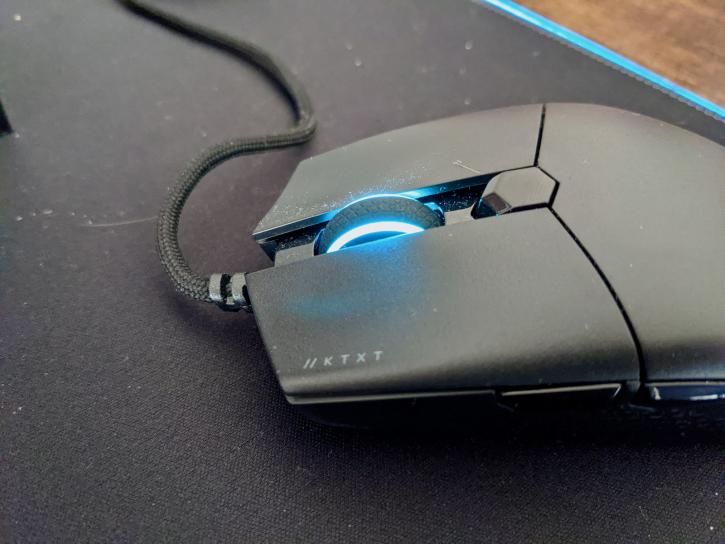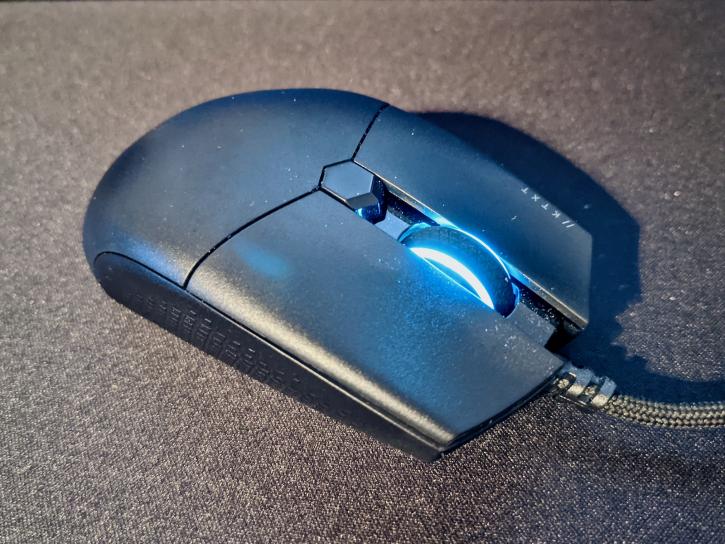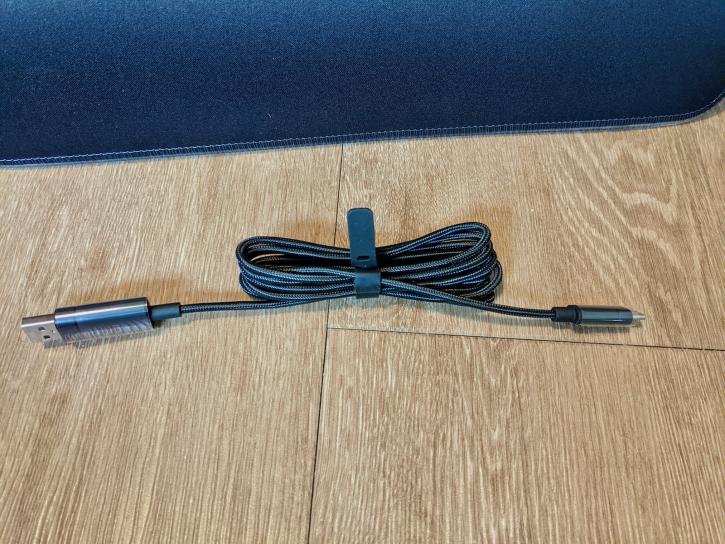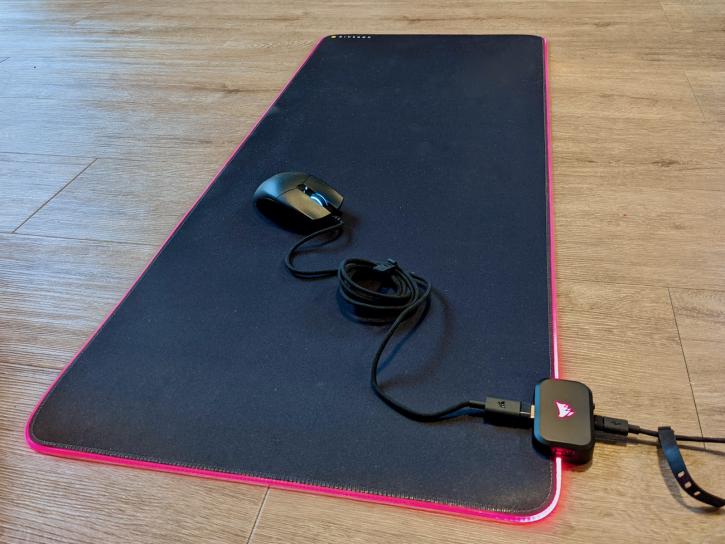More Katar
More Katar
The Katar also looks the part, at least in my eyes. Corsair has stuck their logo on the product, but only in smooth slightly raised glossy plastic where your palm normally would rest. In case you hadn’t gathered by this point, I am a fan of when a company doesn’t feel the need to assault your eyes with its branding! A feature I do like, as well, is that for an RGB product, Corsair has chosen to put the RGB in a place where you will nearly always see it. Namely, the mouse wheel. Of course, it’s single zone, but iCUE allows you to achieve pretty much any colour of the rainbow, and toggle between various effects.
Software (iCUE).
iCUE has changed drastically in my time using it. For those who can remember at least 10,000 years ago, I reviewed Corsair’s 275R gaming chassis in… 2018? That was my first experience with iCUE that I can remember, and the software has markedly improved since then. Whilst I did not experiment with iCUE’s system monitoring capability, the software provides a ‘hub’ for all of your Corsair devices that can interact with it. In the case of RGB fans, lightstrips, and – in this instance – mice and mouse pads, iCUE gives the user near full control over the lighting on the device using c. 20 different effects.
The control iCUE offers to users over the Katar Pro, however, was where I was pleased the most. My regular daily driver, the G305, has excellent customisation inside Logitech’s ‘G-Hub’ software, allowing the user to ‘train’ the mouse on any particular surface, change various DPI ‘stages’, the polling rate, etc. iCUE offers all of this functionality, and it’s great to see.
DPI customisation is, possibly, the most important part of this section, and it works well. iCUE allows the user to choose a ‘default’ DPI (for me, 800 on a 27’’ 1440p screen), and then three other pre-configured ‘stages’ that you can change and then switch to quickly using the button located just behind the mouse wheel. Something I haven’t seen before, however, is the ability to change the mouse’s horizontal ‘X’ DPI and vertical ‘Y’ DPI. I have no idea why this would be necessary, and I would genuinely love to know why it’s a thing. For those interested, there is that ‘Sniper’ function offers as well, allowing the user (having setup one of the Katar’s two side buttons to do so) to quickly swap between a ‘regular’ DPI and a lower DPI for precision aiming. I’ll confess to never having used this in games, ever, with any mouse I’ve ever owned. I don’t see the point, as you have trained your muscle memory to work with a certain DPI, and then it changes. Perhaps, again, I could be enlightened!
A word on iCUE, there is an extensive settings suite that allows the user to change a connected mouse’s polling rate, update firmware, update iCUE itself, and even choose whether you want temperatures displayed in Celsius or Fahrenheit. Useful for perhaps the singular person in the world who measures PC temps in Fahrenheit? You can also enable game-specific on-screen displays using iCUE’s settings section, and even system sensor logging.
Overall, I do like iCUE. I can’t compare it to G-Hub as the former offers a lot more functionality, but – where both do operate in the same areas – I haven’t got a favourite. iCUE is quick to install, snappy to use, and – from what I could tell – mercifully bug free.





